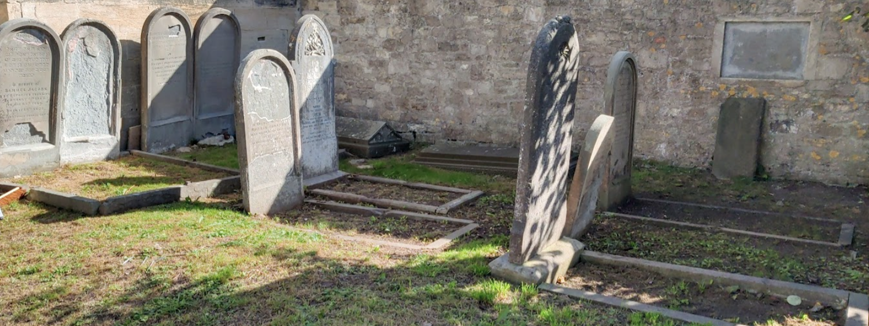By David Taylor: Hidden behind a high wall on the Bradford Road, Combe Down, is a little-known part of Bath’s heritage. During the late 1700s the city was the most fashionable resort in England for royalty, the nobility and the wealthy elite. As well as the middling gentry, the city started to attract the newly well-off professional and commercial middle classes who had money to spend. With its unique hot springs and mild weather, Bath offered them a place of ‘genteel residence’ and good health, fashionable and comfortable society, high quality shops and entertainments. These new visitors and residents required services: doctors, dentists, shops and tradesmen of all kinds. Taking advantage of these commercial opportunities, Jewish people, mainly Ashkenazi originating in Central Europe, but often having first been living in London, Cardiff or the West Country towns where there were already small Jewish communities, began to arrive in Bath, some visiting for the season and some settling here permanently.

By 1810 or so it was clear that there were sufficient Jews in the city to need a Burial Ground, a religious priority even greater than establishing a synagogue. So in 1812 a 1000-year lease (rent: one peppercorn per year) was signed for a small piece of land on Combe Down and the first burial took place the same year. Combe Down at that time was used for surface stone extraction and open grazing for sheep, so perhaps the land was a good price, as well as being away from the city and public gaze. In the 1850s, with the population of Bath at about 50,000, there were 16 Jewish families living in the city, and a total of about 100 people, although synagogue attendance was less than 20 per week except for Holy days. Burials continued, two or three a year, during the 19th and early 20th centuries. The Jewish population increased temporarily during both World Wars, but burials tailed off and the last was in 1941, after which burials have taken place in Bristol.

From the 1950s onward there were few Jewish people in Bath and the Burial Ground fell into severe disrepair, but since the 1990s it has been gradually restored thanks to the support of a local conservation group, the Jewish community, and from money raised from grants, small subscriptions and charitable donations.
The lives of the people interred here provide a fascinating cross section of Bath life: Mr Sigmond the dentist with his ‘patent dentifrice’; Mr Braham, ‘spectacles, theodolites, stereoscopes’, Mr Leon, swords and knives, as well as Mrs Abraham’s ‘splendid wardrobe of dresses’ for the Bachelors’ Fancy Ball; through to jewelers, shopkeepers, tailors, furriers, rich widows and Hebrew teachers; as well as many poorer and more itinerant people buried in unmarked graves. Contemporary records of the burials have been lost, but the local group taking care of the Burial Ground has been reconstructing the history of the Burial Ground and the lives of the Jews of Bath, and holds Open Days three times a year, as well as opening for private visits and holding occasional Guided Walks.
The next opportunity to visit is on Sunday 21 April, 11am till 4pm. The Burial Ground is on Bradford Rd Combe Down, next to the roundabout entrance to Mulberry Park. BA2 3DD, bus no 2 from Bath Railway Station. bathjewishburialground.org


